VRBOs and similar rental situations are raising some concerns among lake residents and one county has set rules and processes for managing rental properties to the benefit of all shoreland owners and users. Chris LeClair, Director of Otter Tail County’s Land and Resource department explained the new rules and led an excellent discussion of Otter Tail County’s Vacation Home Rental Ordinance. The presentation can be seen HERE.
Tag: AIS
DNR conducts roadside watercraft inspection in Wright County

So, what’s up ahead? Wow, the DNR is doing an AIS roadside check of watercraft!
At the end of June on a Friday afternoon, the Minnesota DNR conducted a roadside inspection of watercraft on Highway 55 in Wright County, just east of Annandale. This part of Wright County, known as “Heart of the Lakes,” boasts highly recreated lakes within an hour of the metro. Also, it is home to three lakes with populations of starry stonewort, an invasive species.
The roadside check was on June 28th from 3:00 to 6:30pm. Major Scott Staples, Enforcement Division, MN DNR reports that 16 watercrafts were inspected with one violation noted. A citation was issued for transporting aquatic plants.
“This is just a small sample of what we have been doing statewide,” Major Staples shares. “We have been doing check stations for about 10 years and statewide compliance has been about 90%”.
Thanks to the DNR for this visible and expanded component of the Watercraft Inspection Program.
MN COLA announces speakers for Annual Meeting

What do Kathryn Hoffman (left), Dr. John Rogers (right), Jeff Forester (top), and Hilarie Sorenson (bottom) all have in common?
They are all speaking about water at the MN COLA Annual Meeting on June 18 from 9 am – 11 am CT. The meeting is guaranteed to be interesting and informative, and we hope you will attend.
Register here for the Zoom meeting.
Meeting topics and speakers:
- Election of Directors for the MN COLA Board. Director terms are 3 years and we have several seats to fill. Note: if you have interest in joining the MN COLA Board, please contact Kevin Farum to register your interest.
- Kathryn Hoffman, CEO of the non-profit Minnesota Center for Environmental Advocacy (MCEA), will brief us on the efforts they have underway to protect Minnesota’s public waters. MCEA’s lawyers and scientists are directly involved with environmental legislation in St. Paul and in every major legal fight to protect our water. Kathryn last joined us in December 2020 and she was very well received.
- Jeff Forester from MN Lakes and Rivers Advocates will provide us with an update on the short 2024 Minnesota Legislative Session that ends on May 20.
- Hilarie Sorenson is the newly appointed Water Resources Extension Educator for MN Sea Grant. She is charged with helping to address complex water quality issues through resources and programs. We offered her the opportunity to explain her new role and also to hear from you, our caring lake and river volunteers about your priorities and needs. So besides getting to know Hilarie, you can help her help us with a few polling questions during her presentation.
- Dr. John Rodgers from Clemson University will talk to us about hydrilla, one of the most concerning AIS that has not yet reached Minnesota. He will follow the infestation spread from Florida up the east coast and now in Michigan, the impact on lakes, and what to expect. Many of you became familiar with Dr. Rodgers when starry stonewort was found in Minnesota in 2015. We are so pleased that he will spend some time with MN COLA.
As always, everyone welcome to attend, so feel free to forward this meeting information.
Inland waters need the forest!

MN COLA strongly believes in the need for keeping and reclaiming natural shorelines. This is especially important with the trend of turning part-time cabins into full-time homes. We have many resources on our website to make that case, but it is up to us, as shore owners to understand the impacts of making changes at the shoreline and to retain and/or reclaim the elements that favorably affect water quality.
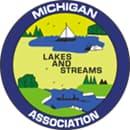
With the permission of Michigan Lakes and Streams Association, we are pleased to provide a link to a terrific article that highlights the important connection between forests and lakes for strong water quality, shoreline stabilization, resistance to AIS, and a strong fishery.
The science supports keeping the forest and lakes connected!
Whose permission do you need for shoreline work?
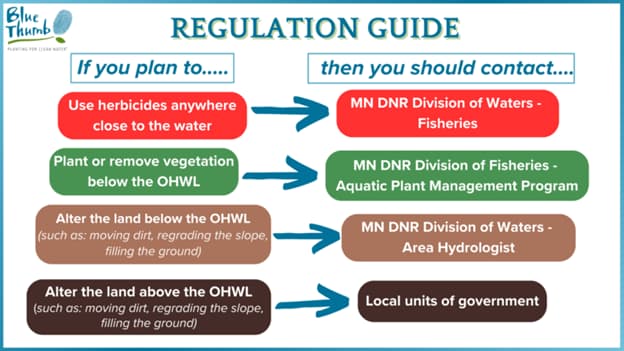
We talk a lot about reclaiming natural shorelines, but you may not have a perspective on the permissions that you will need before you do the work.
This “Regulation Guide” (pictured above) was developed by Blue Thumb and it provides that perspective on approvals you need based on what you plan to do. Blue Thumb’s shoreline stabilization webpage has tabs with Planning, Design, Installation, and Maintenance considerations.
Blue Thumb is an educational program of Metro Blooms, a Minneapolis-based non-profit.
It’s AIS season. Ready, Set, Go!
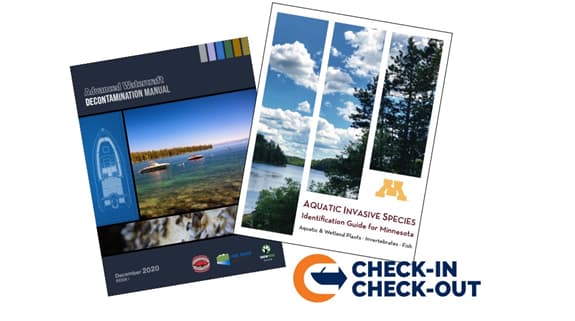
The open water boating season is here and many of your organizations are involved with AIS inspections, inspectors, and early detection activities. Here are a couple of things you may not know about which may help.
The Lake Tahoe watercraft decontamination manual is well-organized with 91 pages of photos and great content, including nearly 30 pages of manufacturer-specific decontamination considerations.
The MAISRC AIS identification guide contains tips for identifying a number of aquatic invasive species (AIS) that are considered high-risk to Minnesota waters, as well as some common native lookalike species. You can download it for free, buy the book, or become an AIS Detector and get the book — plus tons of hands-on training!
The free Check-In, Check-Out program was designed by our friends at CD3 to educate boaters on hand cleaning different types of watercraft and trailers. Simply place the Check-In, Check-Out QR code at a visible location at your boat launch.
Harmful algal blooms: “When in doubt, stay out!”

Algal blooms occur when tiny, naturally occurring plants grow rapidly in an area of water and are visible without a microscope. Not all algal blooms are toxic, but some are. Algal blooms capable of producing toxins dangerous to humans or animals are considered Harmful Algal Blooms (HABs).
MN’s Pollution Control Agency has simple advice for algae blooms: “When in doubt, STAY OUT!”
Here is some great information:
- Michigan produced a helpful picture guide to the different algae.
- Michigan Sea Grant program held a webinar about HABs in March and the recording is now available.
- Minnesota’s Pollution Control Agency has a webpage on Blue-green algae and harmful algal blooms
MN DNR designates 12 more AIS
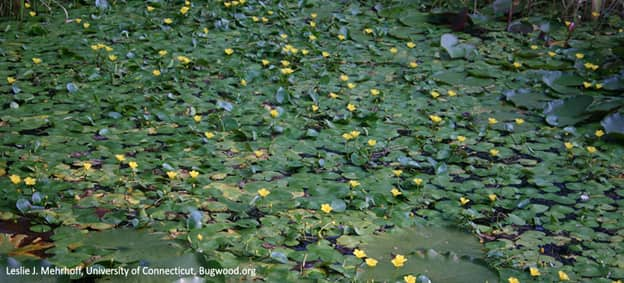
The Minnesota Department of Natural Resources has classified 13 high-risk invasive aquatic plants, fish and invertebrates as prohibited invasive species. All but one (jumping worms) are AIS.
Here are the 13 new AIS: mitten crab, Nile perch, snakehead family, walking catfish family, yellow floating-heart, tench, golden mussel, marbled crayfish (marmorkrebs), golden clam, tubenose gobies (any fish belonging to the genus Proterorhinus), and eastern mosquitofish.
For more information on these new AIS, you can check out the DNR’s website.
Add your Point-Intercept data to MAISRC’s database
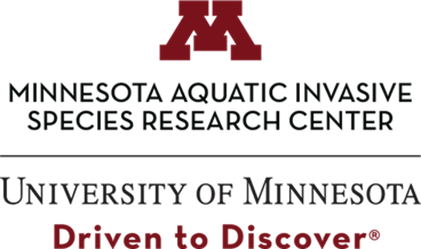
MAISRC is seeking your point-intercept (PI) aquatic plant survey data to add to their statewide database. If your lake or river association have done or are doing lake surveys and are using a point-intercept approach, please follow this link to get more information about the MAISRC database.
Light snow cover could boost curly-leaf pondweed

Kirsti Marohn of Minnesota Public Radio talked with U of MN researcher Michael Verhoeven about the impact that this year’s limited lake snow could have on curly-leaf pondweed (CLP). It may be getting a growth spurt much sooner than normal. Read the full article at MPR news.
